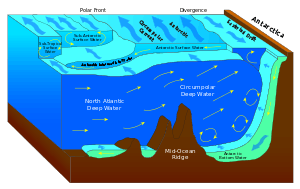Tide gauge

A tide gauge (also known as mareograph or marigraph[1]) is a device for measuring the change in sea level relative to a datum.
Sensors continuously record the height of the water level with respect to a height reference surface close to the geoid. Water enters the device by the bottom pipe (far end of the tube, see picture), and electronic sensors measure its height and send the data to a tiny computer.
Data are available for over 1,750 stations worldwide. At some places records cover centuries, for example in Amsterdam where data dating back to 1700 is available. When it comes to estimating the greater ocean picture, new modern tide gauges can often be improved upon by using satellite data.
Tide gauges are used to measure tides and quantify the size of tsunamis. The measurements make it possible to derive the mean sea level. Using this method, sea level slopes up to several 0.1 m/1000 km and more have been detected.
A tsunami can be detected when the sea level begins to rise, although warnings from seismic activity can be more useful.
Common applications
Tide gauges have a practical application in the shipping and fishing industries where low or high tide levels can hinder or prohibit access to shallow bays or locations with bridges. To this end, many industries have installed private tide gauges in ports across the country and also rely on government agencies (such as NOAA).
Data collected from tide gauges is also of interest to scientists measuring global weather patterns, the mean sea water level, and trends.
Types of gauges
The following types of tide gauges have been used historically:[2]
- Kelvin type tide gauge
- Fuess type tide gauge
- GSI type tide gauge
- High accuracy automatic tide gauge
- High resolution automatic tide gauge
Modern gauges
In recent years new technologies have developed allowing for real-time, remote tide information to be published online via a solar powered wireless connection to a tide sensor. Ultrasonic sensors[3] have already been deployed to great effect and the data is regularly broadcast via Twitter and also displayed online.[4]
Tide gauge at Fort Denison in Sydney, Australia
Tides have been measured at Fort Denison since 1857 on completion of the fort, initially using a bench mark cut into the stonework of the Martello Tower. From 1867 successive instruments were used as tide measuring technology developed.[5] (The measurements since 1886 are graphed by NOAA here.)
The Fort Denison photographs below show float activated tide gauge instruments in a cabinet and the system's stilling well.[6] A wire connected to the upper drum mechanism passes out through the bottom right of the cabinet and runs over a pulley to drop down to the float system in the large pipe in the well. This system is now obsolete at Fort Denison but maintained as a museum exhibit. To the right of the large pipe in the well is an enclosed pipe which rises to the active modern system.
Tide heights and times at Fort Denison are the primary base referent for published tide information for other places in the state of New South Wales.
| Tide gauge installation and instrumentation at Fort Denison | ||||||
|---|---|---|---|---|---|---|
|
See also
References
- ↑ International Tsunami Information Center, UNESCO/IOC-NOAA
- ↑ "History of tide gauges". Tide Observation. Geospatial Information Authority of Japan. Retrieved 19 April 2014.
- ↑ Ultrasonic Sensor Tide Gauge
- ↑ Ockway_Bay Tide Level
- ↑ Refer the interpretive panel installed in the tide room at Fort Denison.
- ↑ Manufactured by Harrison and Son, Darlington, England. For float activated methodology see http://www.fig.net/pub/monthly_articles/july_2010/july_2010_hannah.html
External links
- Historical Examples Brown University
- Mean Sea Level Explanation
- NOAA Tide Data
| ||||||||||||||||
| ||||||||||||||||||||||||||||




